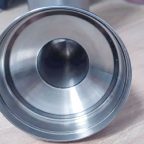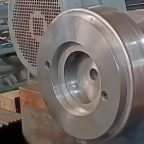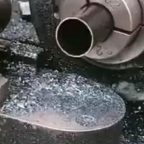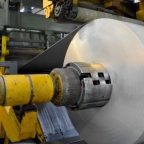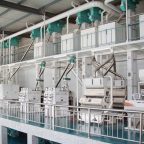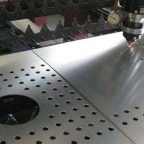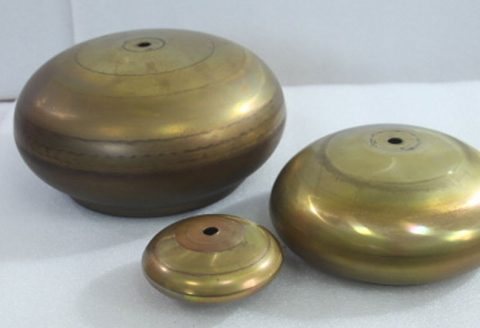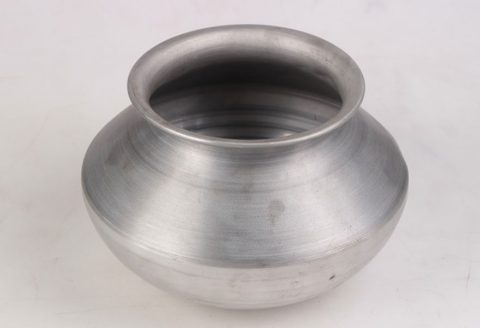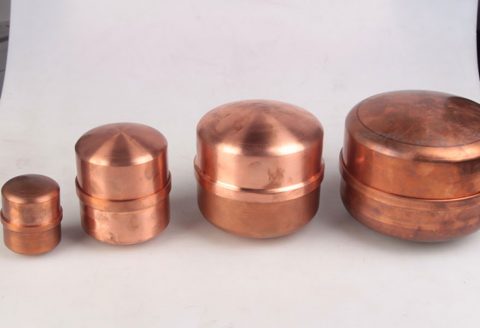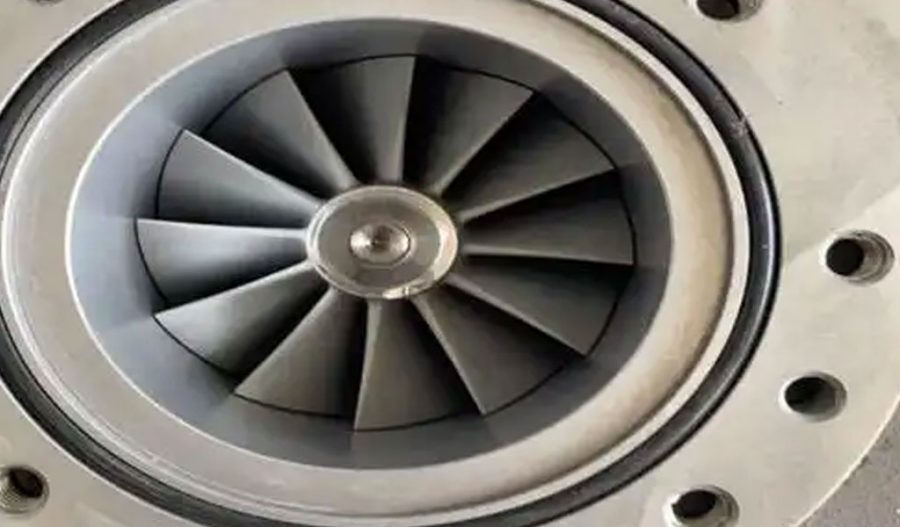
Axial flow fans, characterized by their ability to move air parallel to the axis of rotation, are critical components in a wide range of industrial, commercial, and residential applications. These fans, often referred to as propeller fans, tube-axial fans, or vane-axial fans, are designed to handle large volumes of air at relatively low pressures, making them indispensable in systems requiring efficient ventilation, cooling, and air circulation. From heating, ventilation, and air conditioning (HVAC) systems to industrial process cooling, power generation, and electronics thermal management, axial flow fans play a pivotal role in maintaining optimal operating conditions and enhancing system performance.
The manufacturing of axial flow fans has evolved significantly over the past century, driven by advancements in materials science, aerodynamic design, computational modeling, and manufacturing technologies. Modern axial flow fan manufacturing solutions encompass a complex interplay of engineering disciplines, including fluid dynamics, mechanical engineering, and materials technology, to produce fans that are efficient, durable, and adaptable to diverse applications. This article provides a comprehensive exploration of axial flow fan manufacturing solutions, delving into their design principles, material selections, production processes, performance optimization techniques, and emerging trends. By unveiling the intricacies of these manufacturing solutions, we aim to highlight their importance in addressing contemporary engineering challenges and supporting global industries.
Historical Context of Axial Flow Fans
The development of axial flow fans can be traced back to the early 20th century, when the principles of aerodynamics, initially applied to aircraft propellers, were adapted for industrial ventilation and cooling. The earliest axial flow fans, manufactured in the 1910s, utilized aircraft propeller blades mounted on a streamlined hub within a cylindrical casing. These rudimentary designs, while effective for basic ventilation, lacked the efficiency and precision of modern fans due to limitations in materials and manufacturing techniques.
Significant advancements occurred post-World War II, driven by the development of high-strength aluminum alloys and improved aerodynamic modeling. These materials allowed fans to operate at higher rotational speeds, producing greater pressure and airflow. The introduction of computational fluid dynamics (CFD) in the late 20th century revolutionized fan design, enabling engineers to simulate and optimize airflow patterns with unprecedented accuracy. Today, axial flow fan manufacturing is a sophisticated process that integrates advanced materials, such as fiber-reinforced polymers (FRP), and cutting-edge technologies, including additive manufacturing and automation, to meet the demands of modern applications.
Principles of Axial Flow Fan Operation
Fluid Dynamics and Aerodynamic Principles
Axial flow fans operate on the principle of generating lift, similar to an aircraft wing, through the interaction of rotating blades with the surrounding air. The blades, typically designed with an airfoil shape, create a pressure differential as air flows over their surfaces. The air above the blade travels faster, resulting in lower static pressure, while the air below moves slower, producing higher static pressure. This pressure difference generates lift, propelling the air forward in a direction parallel to the fan’s axis.
The performance of an axial flow fan is governed by several key parameters, including:
- Airflow Rate (Q): Measured in cubic meters per hour (m³/h) or cubic feet per minute (CFM), this represents the volume of air moved by the fan per unit time.
- Static Pressure (P): Measured in Pascals (Pa) or inches of water gauge (in. WG), this indicates the pressure difference the fan can overcome in a system.
- Power Consumption (W): Measured in watts (W) or kilowatts (kW), this reflects the energy required to drive the fan.
- Efficiency (η): Expressed as a percentage, this is the ratio of useful aerodynamic power output to the mechanical power input.
The fan’s performance is often represented by a characteristic curve, which plots airflow rate against static pressure. Axial flow fans exhibit a non-overloading characteristic, meaning their power consumption does not increase indefinitely with increasing resistance, making them suitable for systems with variable operating conditions.
Blade Design and Configuration
The blades of an axial flow fan are the primary components responsible for air movement. Blade design involves optimizing parameters such as chord length, twist angle, stagger angle, and camber to achieve desired airflow and pressure characteristics. Modern blades are typically constructed with airfoil sections to maximize lift-to-drag ratio, thereby enhancing efficiency.
Fans may be classified based on their blade configuration and mounting:
- Ducted Fans: Enclosed in a cylindrical duct, these fans encourage axial airflow and are used in HVAC systems and industrial ventilation.
- Diaphragm or Ring-Mounted Fans: These transfer air between large spaces, such as in cooling towers or agricultural ventilation.
- Circulator Fans: Operating in unrestricted spaces, these include pedestal or ceiling fans used for general air circulation.
Guide vanes, either upstream or downstream of the rotor, are often employed to improve efficiency by reducing swirl in the airflow. Contrarotating designs, featuring two impellers rotating in opposite directions, further enhance performance by recovering rotational energy.
Materials in Axial Flow Fan Manufacturing
Traditional Materials
Historically, axial flow fans have been constructed from metals, primarily aluminum and stainless steel, due to their strength, durability, and ease of fabrication.
- Aluminum: Lightweight and corrosion-resistant, aluminum is widely used for fan housings and impellers. Its high strength-to-weight ratio makes it ideal for applications requiring compact, efficient designs, such as in electronics cooling and HVAC systems.
- Stainless Steel: Employed in harsh environments, such as chemical processing plants or marine applications, stainless steel offers superior resistance to corrosion and high temperatures. It is often used in heavy-duty industrial fans.
Advanced Materials
The advent of composite materials and polymers has transformed axial flow fan manufacturing, enabling lighter, more durable, and energy-efficient designs.
- Fiber-Reinforced Polymers (FRP): FRP, particularly glass fiber-reinforced polymers, is increasingly used for fan blades due to its high strength, low weight, and resistance to corrosion. FRP fans offer improved energy efficiency and reduced noise levels compared to metal counterparts, making them suitable for cooling towers and air-cooled heat exchangers.
- High-Performance Polymers: Materials such as polypropylene and polyamide are used in impellers for applications requiring chemical resistance or operation in aggressive environments.
- Carbon Fiber Composites: Though less common due to cost, carbon fiber is used in high-performance applications, such as aerospace and high-speed industrial fans, where weight reduction and structural integrity are critical.
Material Selection Criteria
The choice of material depends on several factors, including:
- Operating Environment: Corrosive or high-temperature environments may necessitate stainless steel or FRP.
- Performance Requirements: High airflow applications may favor lightweight materials like aluminum or composites.
- Cost Considerations: Aluminum and FRP are often more cost-effective than stainless steel or carbon fiber.
- Regulatory Standards: Compliance with standards such as ISO 9001 or ATEX (for explosive atmospheres) may dictate material choices.
The following table compares common materials used in axial flow fan manufacturing:
| Material | Density (kg/m³) | Tensile Strength (MPa) | Corrosion Resistance | Cost ($/kg) | Typical Applications |
|---|---|---|---|---|---|
| Aluminum | 2,700 | 200–400 | High | 2–4 | HVAC, electronics cooling |
| Stainless Steel | 7,800 | 500–1,000 | Very High | 4–8 | Chemical processing, marine |
| FRP (Glass Fiber) | 1,800–2,000 | 300–600 | Very High | 3–6 | Cooling towers, air-cooled heat exchangers |
| Polypropylene | 900–1,200 | 20–40 | High | 1–2 | Agricultural ventilation, chemical exhaust |
| Carbon Fiber Composite | 1,600 | 1,000–2,000 | High | 20–50 | Aerospace, high-performance industrial |
Manufacturing Processes
Design and Prototyping
The manufacturing process begins with detailed design and prototyping, leveraging advanced tools such as CAD (Computer-Aided Design) and CFD software. These tools enable engineers to model fan performance, optimize blade geometry, and predict aerodynamic behavior under various operating conditions. Prototyping may involve 3D printing for small-scale models or CNC machining for full-scale components, allowing for iterative testing and refinement.
Fabrication Techniques
The fabrication of axial flow fans involves several key processes:
- Casting: Aluminum and stainless steel housings and impellers are often produced using die-casting or sand-casting techniques, which offer high precision and repeatability.
- Molding: FRP blades are manufactured using hand lay-up or resin transfer molding (RTM), where layers of glass fiber are impregnated with epoxy or vinyl ester resin and cured to form strong, lightweight components.
- Machining: Precision machining is used to refine impeller surfaces, ensuring aerodynamic efficiency and dynamic balance.
- Assembly: Components such as blades, hubs, housings, and motors are assembled using bolts, welds, or adhesives, with careful attention to alignment and balance to minimize vibration.
Quality Control and Testing
Quality control is critical to ensuring fan performance and reliability. Common testing methods include:
- Air Performance Testing: Conducted in accordance with standards such as ISO 5801, this measures airflow rate, static pressure, and power consumption.
- Sound Testing: Evaluates noise levels to ensure compliance with occupational health standards.
- Vibration Analysis: Detects imbalances or structural weaknesses that could lead to premature failure.
- Non-Destructive Testing (NDT): Techniques such as dye penetrant testing and X-ray inspection are used to identify material defects.
The following table summarizes key manufacturing processes and their applications:
| Process | Description | Materials Used | Applications |
|---|---|---|---|
| Die-Casting | Molten metal is injected into a mold to form precise components | Aluminum, Stainless Steel | Housings, impellers |
| Resin Transfer Molding | Resin is injected into a mold containing fiber reinforcement | FRP (Glass Fiber) | Blades for cooling towers, heat exchangers |
| CNC Machining | Computer-controlled cutting to achieve high-precision surfaces | Aluminum, Stainless Steel | Impeller finishing, hub manufacturing |
| Hand Lay-Up | Manual layering of fiber and resin to form composite components | FRP, Carbon Fiber | Custom blades for specialized applications |
| Vibration Testing | Measurement of dynamic balance and structural integrity | All materials | Quality control for assembled fans |
Performance Optimization Techniques
Aerodynamic Optimization
Aerodynamic optimization is central to improving axial flow fan performance. Techniques include:
- Blade Profile Optimization: Using Bezier curves or other parametric methods to design blade shapes that maximize lift-to-drag ratio.
- Tip Clearance Reduction: Minimizing the gap between blade tips and the housing to reduce leakage losses and improve efficiency.
- Guide Vane Integration: Adding fixed or adjustable vanes to recover swirl energy and enhance static pressure.
Computational tools, such as CFD and finite element analysis (FEA), are used to simulate airflow and structural behavior, enabling engineers to identify and mitigate inefficiencies.
Energy Efficiency Improvements
Energy efficiency is a key focus in modern fan manufacturing, driven by regulatory standards and environmental concerns. Strategies include:
- High-Efficiency Motors: Incorporating IE3 or IE4 efficiency-rated motors to reduce power consumption.
- Variable Frequency Drives (VFDs): Allowing precise control of fan speed to match system demand, thereby minimizing energy waste.
- Material Innovations: Using lightweight composites to reduce inertial losses and improve fan responsiveness.
Noise Reduction
Noise reduction is critical for applications in residential and commercial settings. Techniques include:
- Blade Design Modifications: Optimizing blade angle and curvature to reduce turbulent flow and associated noise.
- Acoustic Treatments: Applying sound-absorbing materials or geometric modifications, such as chevron nozzles or wavy inner walls, to attenuate noise.
- Vibration Damping: Using resilient mounts or damping materials to minimize mechanical noise.
Applications of Axial Flow Fans
Industrial Applications
Axial flow fans are widely used in industrial settings for ventilation, cooling, and exhaust applications. Key sectors include:
- Manufacturing: Fans regulate temperature and remove fumes in production areas, ensuring worker safety and equipment longevity.
- Power Generation: Used in cooling towers and air-cooled heat exchangers to dissipate heat from steam turbines and generators.
- Mining and Tunneling: Provide ventilation to remove dust, gases, and ensure safe working conditions.
Commercial and Residential Applications
In commercial and residential settings, axial flow fans are employed in:
- HVAC Systems: Circulate air to maintain indoor air quality and temperature control in buildings.
- Electronics Cooling: Dissipate heat from servers, computers, and other electronic devices to prevent overheating.
- Agriculture: Ventilate livestock barns, greenhouses, and storage facilities to control temperature and humidity.
Specialized Applications
Axial flow fans are also used in specialized applications, such as:
- Aerospace: Cooling avionics and cabin ventilation in aircraft.
- Marine: Providing ventilation and cooling in ship engine rooms and cargo holds.
- Emergency Systems: Removing smoke and hot gases in fire safety systems.
Emerging Trends in Axial Flow Fan Manufacturing
Additive Manufacturing
Additive manufacturing, or 3D printing, is revolutionizing fan production by enabling the creation of complex blade geometries that are difficult to achieve with traditional methods. This technology allows for rapid prototyping, reduced material waste, and the production of lightweight, high-strength components.
Smart Fan Technologies
The integration of Internet of Things (IoT) technologies is transforming axial flow fans into smart devices. Sensors embedded in fans can monitor parameters such as airflow, temperature, and vibration, providing real-time data for predictive maintenance and performance optimization. Smart fans can also integrate with building management systems for automated control.
Sustainable Manufacturing Practices
Sustainability is a growing priority in fan manufacturing. Manufacturers are adopting eco-friendly materials, such as recyclable composites, and implementing energy-efficient production processes. Additionally, the development of low-noise, high-efficiency fans contributes to reduced environmental impact.
Customization and Modular Designs
The demand for customized fan solutions is increasing, particularly in specialized applications. Manufacturers are developing modular fan designs that allow for easy configuration of blade types, motor specifications, and mounting options, enabling tailored solutions without significant cost increases.
Case Studies
Case Study 1: Tuf-Lite IV Fans by Chart Industries
Chart Industries’ Tuf-Lite IV axial flow fans, designed for air-cooled heat exchangers and cooling towers, exemplify the advancements in composite materials. These fans, constructed from hand-laid FRP with epoxy or vinyl ester resin, offer 12% higher efficiency than aluminum counterparts. Their lightweight design reduces structural loads, while a 36-month warranty ensures reliability. Performance testing at Matimba power station demonstrated a shaft power of 140 kW at an outlet air velocity of 3.5 m/s, confirming their suitability for large-scale applications.
Case Study 2: FRP Fans for Energy Efficiency
A project by the Advanced Composites Mission of TIFAC demonstrated the energy-saving potential of FRP axial flow fans. By optimizing blade design for a higher lift-to-drag ratio, these fans achieved significant power savings compared to traditional aluminum and steel impellers. The study highlighted the importance of composite development and aerodynamic design in enhancing fan efficiency.
Case Study 3: Noise Reduction in Residential Fans
A 2024 study published in the Journal of Umm Al-Qura University for Engineering and Architecture explored noise reduction techniques for axial flow fans. By attaching add-on designs, such as chevron nozzles and wavy inner walls, the study achieved noise reductions of 3–10% at the blade tip and 26–55% at the outlet. These findings underscore the potential of geometric modifications to improve acoustic performance in residential and commercial settings.
Challenges in Axial Flow Fan Manufacturing
Design Complexity
The design of high-performance axial flow fans requires balancing multiple parameters, including airflow, pressure, efficiency, and noise. This complexity necessitates advanced computational tools and extensive testing, increasing development costs and time.
Material Costs
While advanced materials like FRP and carbon fiber offer superior performance, their higher costs can be prohibitive for some applications. Manufacturers must balance performance benefits with economic considerations.
Regulatory Compliance
Axial flow fans must comply with stringent standards, such as ISO 5801 for performance testing, ATEX for explosive atmospheres, and occupational noise regulations. Meeting these requirements adds complexity to the manufacturing process.
Market Competition
The axial flow fan market is highly competitive, with numerous manufacturers vying for market share. Differentiating products through innovation, quality, and cost-effectiveness is a constant challenge.
Future Directions
The future of axial flow fan manufacturing lies in continued innovation and adaptation to global trends. Key areas of focus include:
- Artificial Intelligence (AI) in Design: AI-driven algorithms can optimize blade geometry and predict performance, reducing design time and improving efficiency.
- Energy Harvesting: Integrating energy harvesting technologies, such as piezoelectric materials, could enable fans to generate power from airflow, enhancing sustainability.
- Circular Economy Practices: Developing recyclable fan components and implementing take-back programs can reduce environmental impact.
- Global Standardization: Harmonizing performance and safety standards across regions can facilitate market access and ensure consistent quality.
Conclusion
Axial flow fan manufacturing solutions represent a pinnacle of engineering innovation, combining principles of fluid dynamics, materials science, and advanced manufacturing to deliver high-performance, reliable, and efficient air movement systems. From their historical roots in aircraft propeller technology to their modern applications in diverse industries, axial flow fans have evolved into sophisticated devices that address critical needs in ventilation, cooling, and air quality management. By leveraging advanced materials, computational modeling, and emerging technologies, manufacturers continue to push the boundaries of fan performance, efficiency, and sustainability.
This comprehensive exploration of axial flow fan manufacturing solutions underscores their importance in supporting global industries and addressing contemporary challenges, such as energy efficiency and environmental sustainability. As the field continues to evolve, the integration of smart technologies, sustainable practices, and innovative design methodologies will ensure that axial flow fans remain at the forefront of air movement solutions for decades to come.
Maximize Tooling and CNC Metal Spinning Capabilities.

At BE-CU China Metal Spinning company, we make the most of our equipment while monitoring signs of excess wear and stress. In addition, we look into newer, modern equipment and invest in those that can support or increase our manufacturing capabilities. Our team is very mindful of our machines and tools, so we also routinely maintain them to ensure they don’t negatively impact your part’s quality and productivity.
Talk to us today about making a rapid prototype with our CNC metal spinning service. Get a direct quote by chatting with us here or request a free project review.
BE-CU China CNC Metal Spinning service include : CNC Metal Spinning,Metal Spinning Die,Laser Cutting, Tank Heads Spinning,Metal Hemispheres Spinning,Metal Cones Spinning,Metal Dish-Shaped Spinning,Metal Trumpet Spinning,Metal Venturi Spinning,Aluminum Spinning Products,Stainless Steel Spinning Products,Copper Spinning Products,Brass Spinning Products,Steel Spinning Product,Metal Spinnin LED Reflector,Metal Spinning Pressure Vessel,
